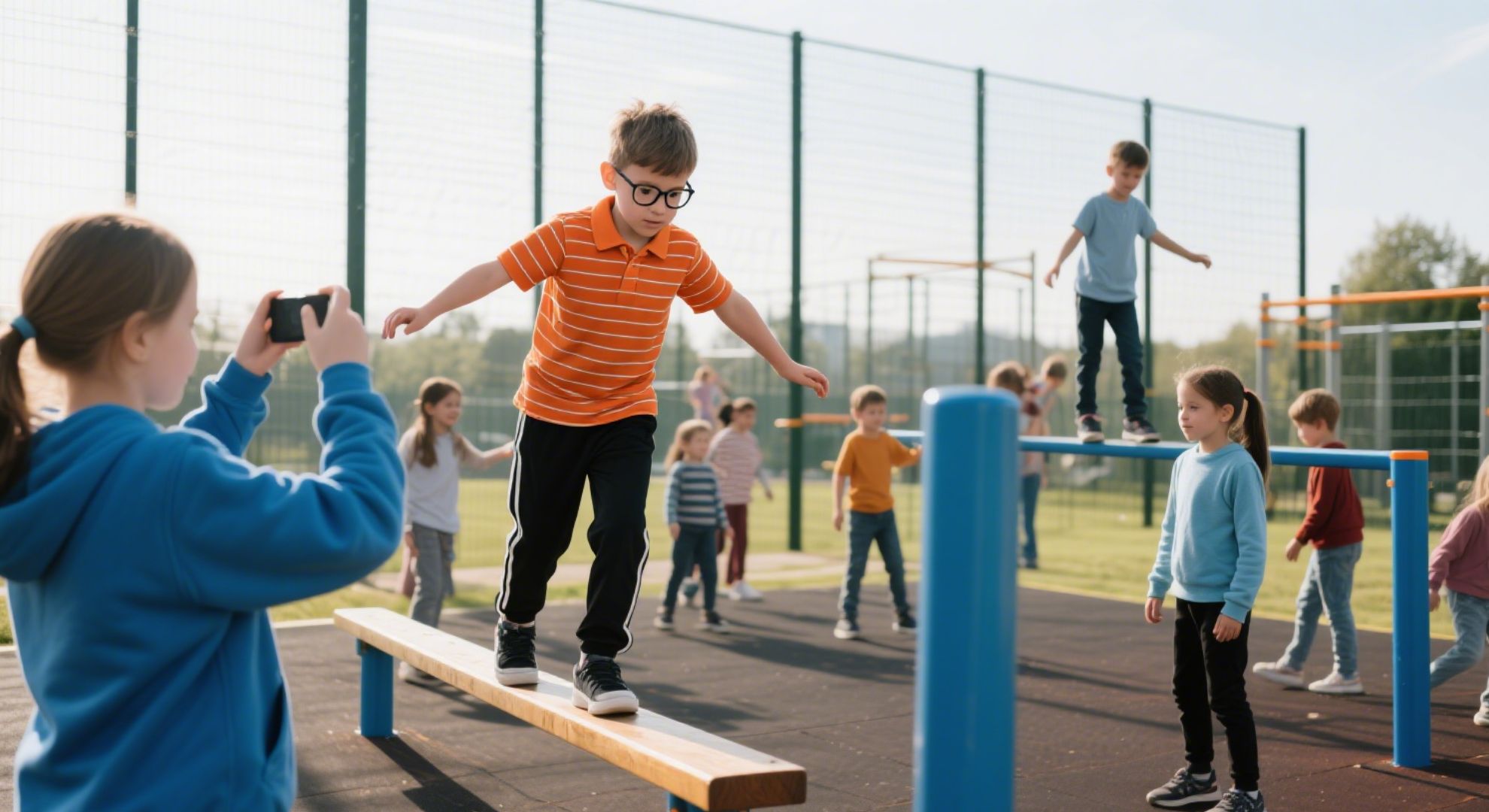How to Make School Playgrounds More Inclusive?
2025年6月27日 / By SafeKidsPlay
Creating inclusive school playgrounds is no longer a trend—it’s a necessity. Children of all abilities deserve safe, fun, and developmentally appropriate environments where they can play, connect, and grow. As a professional playground equipment manufacturer, we’ve worked with educators, architects, and city planners around the world to develop inclusive solutions that truly make a difference. In this blog, we’ll share the best practices, design tips, and equipment recommendations to make your playground inclusive and future-ready.
Why Inclusivity in Playgrounds Matters
Inclusive playgrounds enable children with and without disabilities to play together. They reduce social isolation, build empathy, and support holistic development—physical, social, emotional, and cognitive.
According to the CDC, 1 in 6 children in the U.S. has one or more developmental disabilities. Yet, many school playgrounds still fall short in providing accessible and inclusive play environments. This gap not only excludes children but limits learning and interaction opportunities for all students.
Key Features of an Inclusive Playground
Designing for inclusivity means more than just installing a wheelchair ramp. It requires intentional planning to ensure accessibility, usability, and meaningful engagement for every child.
Here are essential components:
1. Accessible Surfacing
Rubber tiles, poured-in-place rubber, and engineered wood fiber provide smooth, shock-absorbing surfaces for wheelchairs and mobility aids.
2. Sensory-Rich Activities
Incorporate tactile panels, sound-based games, spinning elements, and visually stimulating colors to support sensory development in children with autism or sensory processing disorders.
3. Varied Levels of Challenge
Offer activities for all skill levels—climbing nets, balance beams, and motion-based equipment—so children can choose their own adventure without feeling left out.
4. Social Play Zones
Create group play areas that promote cooperation, communication, and inclusive social interaction. Equipment like playhouses, sand tables, and musical instruments are great for this.
5. Quiet Spaces
Not all children enjoy high-energy environments. Provide shaded or semi-enclosed spaces where children can take a break and self-regulate.
How to Plan an Inclusive School Playground
Step 1: Assess Your Current Playground
Identify barriers—both physical and social—that prevent children from participating equally.
Step 2: Engage Stakeholders
Include input from teachers, therapists, parents, and children. Especially listen to families of children with disabilities—they offer invaluable perspectives.
Step 3: Choose the Right Equipment Partner
Work with a manufacturer who specializes in inclusive playground design. Look for certifications, material safety standards, and proven project success.
Step 4: Incorporate Universal Design Principles
Universal design ensures that all features are usable by the widest range of children, regardless of ability.
Step 5: Maintain and Monitor
Inclusivity doesn’t end with installation. Conduct regular safety checks and update components as children’s needs evolve.
Recommended Inclusive Playground Equipment
As a professional manufacturer, we offer a range of equipment tailored to inclusivity:
-
Inclusive Swings with high-backs and harnesses
-
Ground-Level Play Panels for interactive fun
-
Accessible Merry-Go-Rounds with easy entry
-
Wide Ramps connecting different areas seamlessly
-
Sensory Paths for multi-sensory stimulation
-
Inclusive Fitness Stations to encourage movement in all children
Each product is crafted to meet international safety and accessibility standards, including ASTM and EN regulations.
The Long-Term Benefits
An inclusive playground is more than just equipment—it’s an investment in your school community:
-
Improved academic outcomes through better physical and emotional well-being
-
Greater social cohesion among students
-
Enhanced school reputation and compliance with ADA/IDEA requirements
-
Happier parents and caregivers who feel seen and supported
Final Thoughts
Inclusive playgrounds are not a luxury—they’re a responsibility. With thoughtful planning, community involvement, and the right equipment, schools can create play environments where every child can laugh, learn, and thrive.
Ready to transform your school playground into an inclusive haven for all students? Contact our team today for a free consultation and expert design support.

